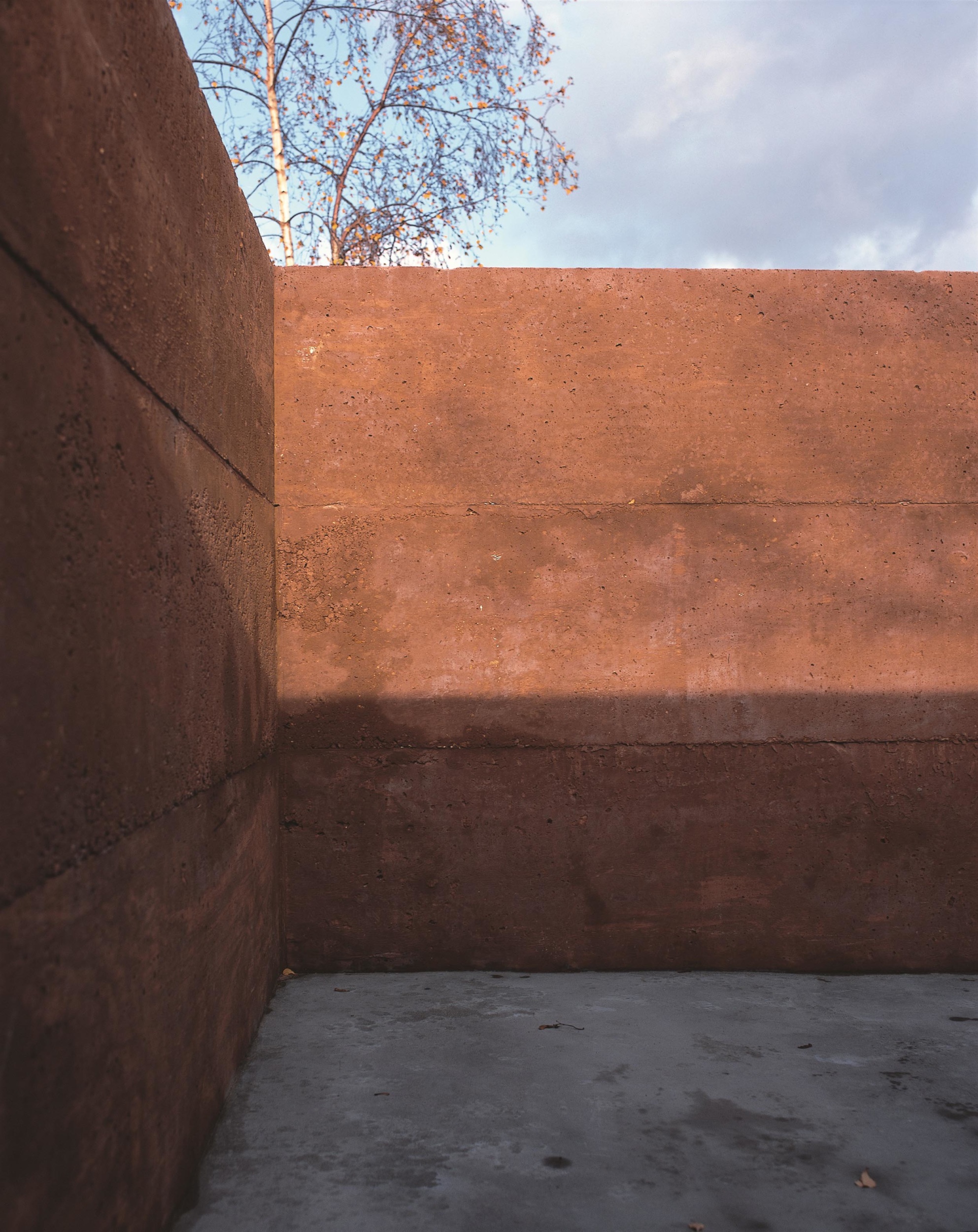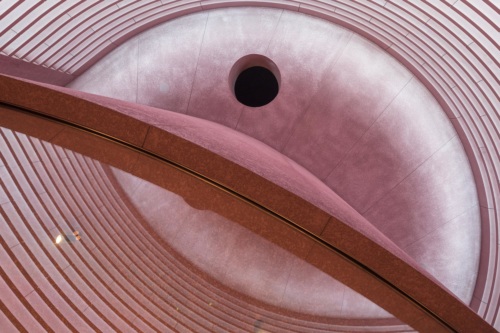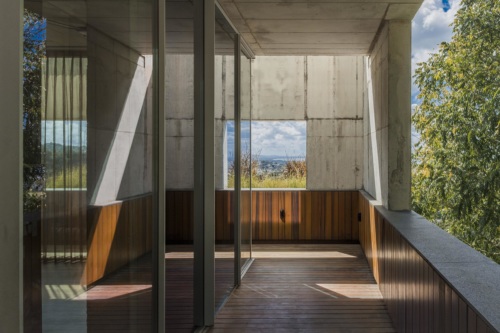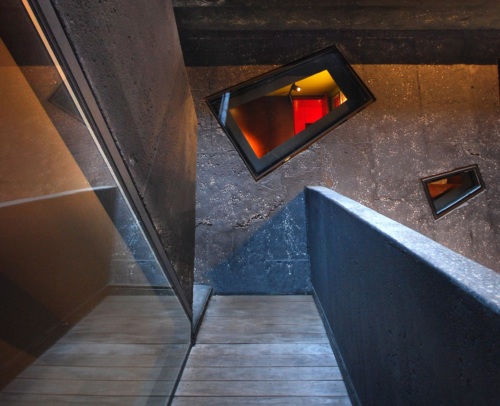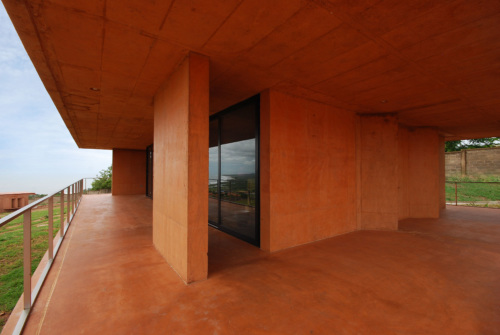
Concrete Garden
London, UK (2001)
Apart from its ability to focus transient effects, the wall frames a view of the sky in which details from the surrounding environment are displayed in relative isolation along its bottom edge: chimneys in various states of repair.
This project inverts the normal concept of a garden. The edge condition is of little importance in this empty space enclosed by a continuous concrete wall 2.2m high. Spaces that can be seen, but not necessarily entered, can be found in traditional and contemporary architecture in Japan. They provide occasions when normal perceptions of scale and convention are suspended. The emptiness itself draws attention to the scale and materiality of the enclosure and to subtle changes of atmosphere due to the season of the year, weather or time of day.
The colour of the walls is the result of adding rust to the concrete before it was placed in position. In sunlight, it is a bright reddish brown; in subdued light, it is a more recessive shade. The wall frames a view of the sky in which details from the surrounding environment are displayed in relative isolation along its bottom edge: chimneys in various states of repair, the tops of trees, areas of brickwork and so on. Removed from their normal context, they have a clarity of form and structure that might otherwise go unnoticed. The height of the walls is the maximum allowed without obtaining planning permission.
